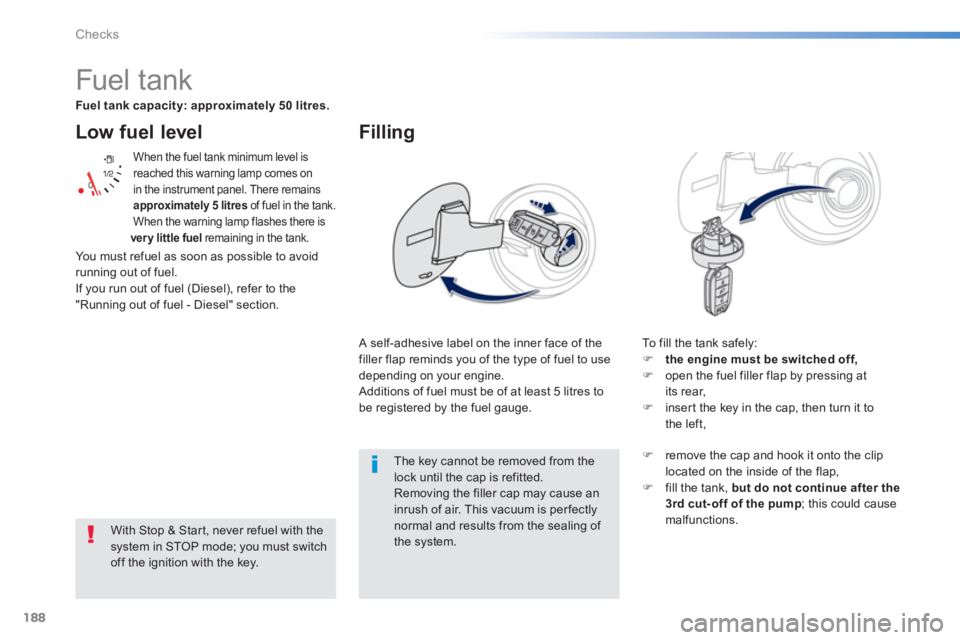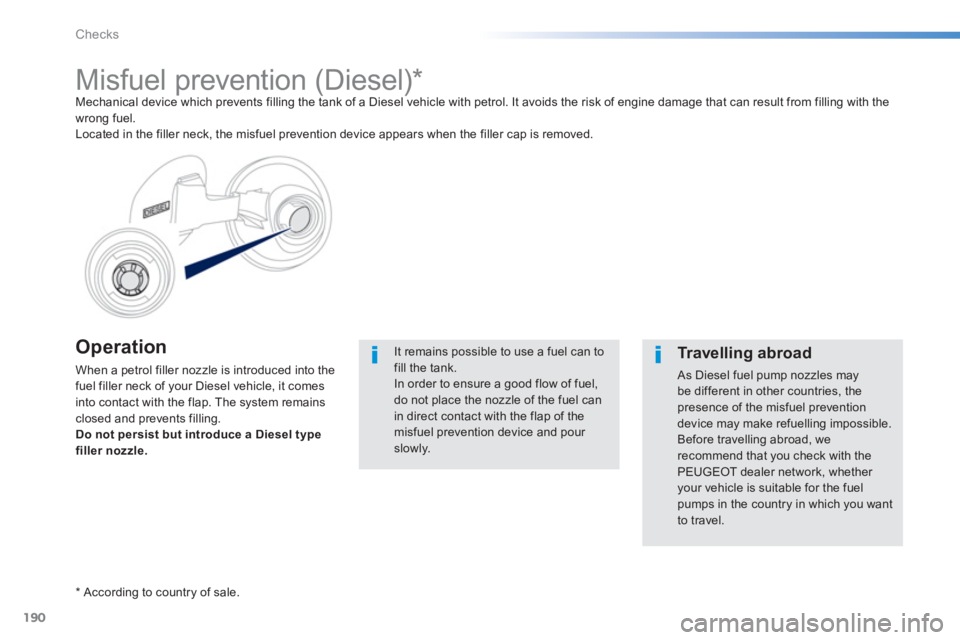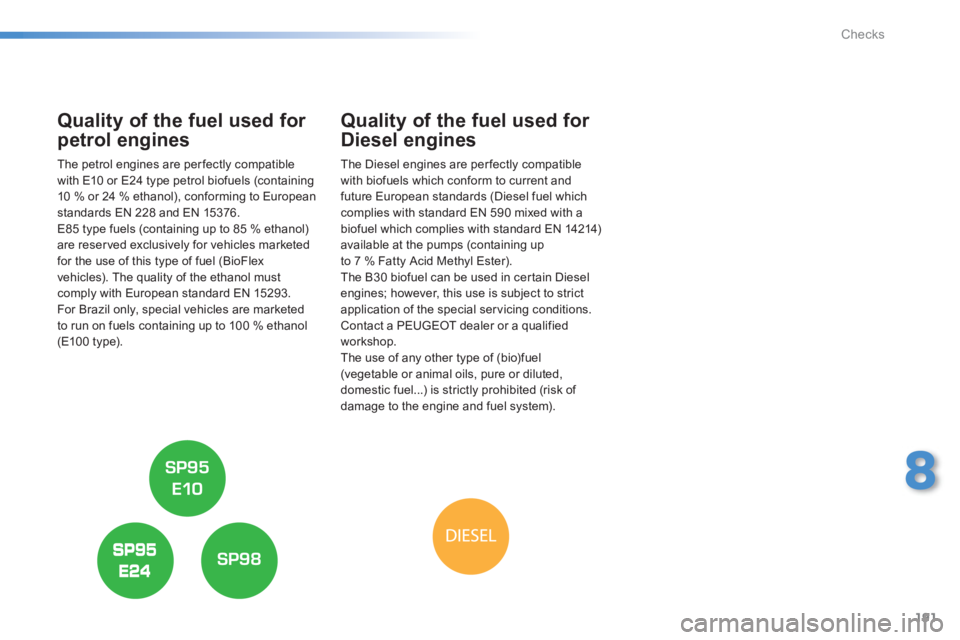Page 21 of 324

.
19
Familiarisation
Eco-driving
Eco-driving is a range of everyday practices that allow the motorist to optimise their fuel consumption and CO2emissions.
Optimise the use of your gearbox
With a manual gearbox, move off gently, change up without waiting and drive by changing up quite soon. If your vehicle has the system,
the gear shift indicator invites you to change up; it is displayed in the instrument panel, follow its instructions.
With an automatic or electronic gearbox, stay in Drive "D"or Auto "A"
, according to the type of gearbox, without pressing the accelerator pedal heavily or suddenly.
Drive smoothly
Maintain a safe distance between vehicles, use engine braking rather than the brake pedal, and press the accelerator progressively. These practices contribute towards a reduction in fuel consumption andCO2emissions and also helps reduce the background traffic noise.
If your vehicle has cruise control, make use of the system at speeds above 25 mph (40 km/h) when the traffic is flowing well.
Control the use of your electrical
equipment
Before moving off, if the passenger compar tment is too warm, ventilate it by opening the windows and air vents before using the air conditioning.
Above 30 mph (50 km/h), close the windows and leave the air vents open.
Remember to make use of equipment that can help keep thetemperature in the passenger compar tment down (sunroof and windowblinds...).
Switch off the air conditioning, unless it has automatic digital regulation, as soon as the desired temperature is attained.
Switch off the demisting and defrosting controls, if not automatic. Switch off the heated seat as soon as possible.
Switch off the headlamps and front foglamps when the level of light does not require their use.
Avoid running the engine before moving off, particularly in winter; your vehicle will warm up much faster while driving.
As a passenger, if you avoid connecting your multimedia devices (film, music, video game...), you will contribute towards limiting theconsumption of electrical energy, and so of fuel.
Disconnect your por table devices before leaving the vehicle.
Page 190 of 324

188
Checks
Low fuel level
When the fuel tank minimum level is reached this warning lamp comes on in the instrument panel. There remainsapproximately 5 litres
of fuel in the tank.
When the warning lamp flashes there is very little fuel remaining in the tank.
The key cannot be removed from the lock until the cap is refitted. Removing the filler cap may cause an inrush of air. This vacuum is per fectly normal and results from the sealing of
the system.
Fuel tank
Fuel tank capacity: approximately 50 litres.
A self-adhesive label on the inner face of thefiller flap reminds you of the type of fuel to use
depending on your engine.
Additions of fuel must be of at least 5 litres to be registered by the fuel gauge.
Filling
To fill the tank safely: �)the engine must be switched off,�)open the fuel filler flap by pressing at
its rear, �)inser t the key in the cap, then turn it to
the left,
With Stop & Star t, never refuel with the system in STOP mode; you must switch off the ignition with the key.
�)remove the cap and hook it onto the cliplocated on the inside of the flap, �)fill the tank, but do not continue after the
3rd cut- off of the pump ; this could causemalfunctions. You must re
fuel as soon as possible to avoid running out of fuel.
If you run out of fuel (Diesel), refer to the
"Running out of fuel - Diesel" section.
Page 192 of 324

190
Checks
Operation
When a petrol filler nozzle is introduced into the
fuel filler neck of your Diesel vehicle, it comes
into contact with the flap. The system remainsclosed and prevents filling.
Do not persist but introduce a Diesel type filler nozzle.
Misfuel prevention (Diesel) * Mechanical device which prevents filling the tank of a Diesel vehicle with petrol. It avoids the risk of engine damage that can result from filling with the
wrong fuel.
Located in the filler neck, the misfuel prevention device appears when the filler cap is removed.
* Accordin
g to country of sale.
It remains possible to use a fuel can to fill the tank. In order to ensure a good flow of fuel,do not place the nozzle of the fuel can in direct contact with the flap of the misfuel prevention device and pour slowly.
Tr a v e l l i ng abroad
As Diesel fuel pump nozzles maybe different in other countries, thepresence of the misfuel preventiondevice may make refuelling impossible.
Before travelling abroad, werecommend that you check with thePEUGEOT dealer network, whether your vehicle is suitable for the fuel pumps in the country in which you want to travel.
Page 193 of 324

191
8
Checks
Quality of the fuel used for
petrol engines
The petrol engines are perfectly compatible
with E10 or E24 type petrol biofuels (containing10 % or 24 % ethanol), conforming to Europeanstandards EN 228 and EN 15376.
E85 type
fuels (containing up to 85 % ethanol)
are reser ved exclusively for vehicles marketed
for the use of this type of fuel (BioFlex
vehicles). The quality of the ethanol mustcomply with European standard EN 15293.
For Brazil only, special vehicles are marketed
to run on fuels containing up to 100 % ethanol(E10 0 type).
Quality of the fuel used for
Diesel engines
The Diesel engines are per fectly compatiblewith biofuels which conform to current and future European standards (Diesel fuel which complies with standard EN 590 mixed with a
bio
fuel which complies with standard EN 14214)available at the pumps (containing up
to 7 % Fatty Acid Methyl Ester).
The B30 biofuel can be used in cer tain Diesel
engines; however, this use is subject to strictapplication of the special ser vicing conditions.Contact a PEUGEOT dealer or a qualifiedworkshop.
The use of any other type of (bio)fuel (vegetable or animal oils, pure or diluted,
domestic fuel...) is strictly prohibited (risk of
damage to the engine and fuel system).